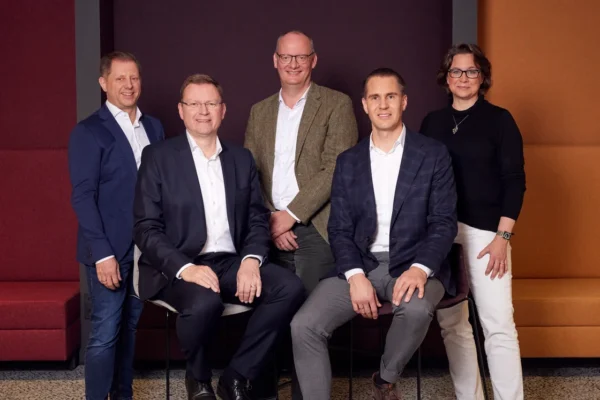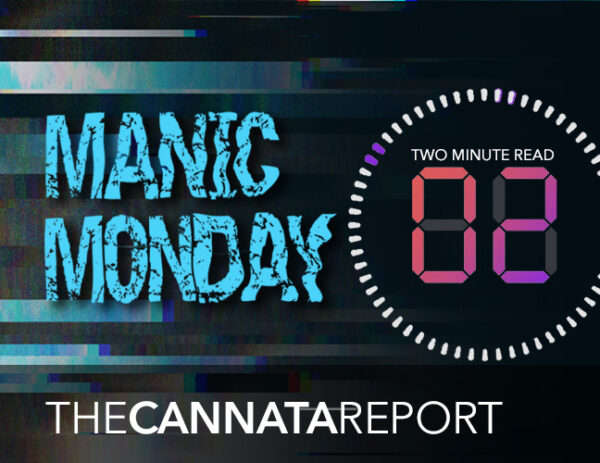Ricoh looks to empower digital workplaces by expanding beyond the boundaries of print.
Opposite Page: Ricoh’s 100% eco-powered (solar and wind) electronic billboard at the San-ai Dream Center Building in Tokyo’s Ginza Square
If there’s one thing you can say about Ricoh Co. Ltd., it’s that the company has a strong foundation in the Japanese domestic market where it dominates with print technology. However, the challenge the company has been facing of late is replicating that success overseas.
This substantial challenge was acknowledged in an in-depth presentation by Ricoh Co. Ltd. executives, as we learned about the company’s Resurgent Plan to turn things around and expand by 2020. The plan, according to Dominic Keogh, general manager, global communications, at Ricoh Co. Ltd., is more of a rethink of Ricoh. (Editor’s note: Our presentations at Ricoh Japan were led by Irishman Keogh and American Steve Burger, both of whom are based in Japan.)
Since 1990, Ricoh has been on a fast growth trajectory, growing from a $10 million business prior to 1990 to a $20
billion business today. Much of that growth has been from acquisitions, which slowed down considerably after
the financial crisis of 2009, even as Ricoh continued to acquire service companies and businesses in the production and
industrial print space. Other factors driving growth during this period were the shift to digital and the transition from mono to color.
In the wake of 2009’s economic meltdown, Ricoh began reconsidering which business strategies to follow, trying to gauge whether those strategies will have the appropriate effect on the business, particularly with profitability challenges and changing market dynamics.
Ricoh’s strategies for growth were once centered around the pursuit of market share, growing MIF, having a full lineup of products, and the conviction that because Ricoh was a technology company it had to make everything it sold. These strategies helped drive scale, but as Keogh noted, they didn’t always yield positive results.
“If we’re just going to push out MIF, and do so unprofitably, that’s not going to return much value to the business,” observed Keogh, conceding those strategies were relevant to grow the business before the global financial crisis, but after the crisis, they were no longer relevant.
Since reevaluating its previous business strategies and determining if they were a good fit for the future, Ricoh has initiated
internal structural reforms, examined cost structures, and the way it brings products to market.
Key to the company’s plan was determining which Ricoh business segments were no longer adding value, draining management resources, or simply no longer a fit for Ricoh today. Next we explored the company’s growth areas, acknowledging the company can’t invest in everything.
“We needed to focus our attention on our strengths and deploy strategies based on where we have real strengths,” affirmed Keogh.
This led to the company divesting itself of businesses that had nothing to do with the core imaging business. Today, Ricoh’s mission, as described by Keogh, is “empowering digital workplaces.”
As he explained, the digital workplace is no longer confined to a traditional office, as technology has empowered people to work from just about anywhere. Ricoh’s focus is providing technology for those digital workplaces.
“In the past, the focus was on labor savings,” said Keogh. “Today, people want to be able to access information and do something with that information. Ricoh is very much about improving these workplaces wherever they are by using our technology and services to allow people to work smarter.”
Growth Strategies
Keogh also outlined two of Ricoh’s key growth strategies. The first centers on Ricoh’s core printing technology and how the company can leverage that to move further up the value chain as people print an assortment of things, including in the commercial and industrial print arenas. Second was recognizing that as it connects offices with front lines via a variety of technologies, all of which are providing and compiling data within customer’s workplaces, there’s a need to figure out how to use that data to deliver new value to customers. Ricoh is investing 100 billion yen into each of these growth strategies.
How Ricoh sees this playing out over the next four years should give dealers here in the U.S. something to think about. Today, more than half of the company’s revenues (53%) come from office print. By 2022, Ricoh sees office print revenues declining to 39%. By 2020, Ricoh predicts more than half of its revenues will come from the above two growth strategies with even less derived from office print.
The Future of the MFP
Even though printing is on the decline, Keogh acknowledged that print is still a lucrative business for Ricoh and will continue to be in the future. That said, Ricoh sees the MFP undergoing a transformation. In smaller offices, the MFP sits in the center and in many ways functions as the hub of the office. In an enterprise, the MFP at the edge of the office and it’s not just an output device, but rather a device with a lot of data traveling through it. Ricoh’s vision is to connect these “edge” devices and all that data flowing through them into a back-office system and help customers more efficiently and effectively in their businesses.
“You’ll see an MFP evolution where these devices are connected to the cloud and communicating constantly with the
cloud,” predicted Keogh. “We see this as the absolute essence of Ricoh’s future growth. It’s really about generating new value by linking offices and people together.”
Smart Integration Platform with Cloud Workflow
Two years ago, Ricoh began developing its Smart Integration Platform with Cloud Workflow Solutions. It’s now ready for rollout, as we learned in Japan, as well as a month later at Ricoh ConvergX in Las Vegas. The platform connects all the company’s offerings, which is something that Steve Burger, Ricoh’s vice president, general manager, international business, Imaging Systems Business Center, Ricoh Co. Ltd., says could differentiate Ricoh from everyone else out there.
“All the data going through this and all the knowledge, you have action items from meetings, memos, imaging, and are putting it all together,” explained Burger. “If we can create knowledge from all the data, we can add value to our customers.”
As more devices are used to capture information and integrate this information into an organization’s workflow, this moves the dealer’s annuity away from the MFP to whatever device the customer is using.
“The new annuity is workflow,” said Burger, it’s time for the industry to look more closely at subscription-based annuity models similar to Spotify. What if I can digitally market some of this workflow from the cloud and sell any customer a simple workflow for $20 a month? This is an untapped business for all of us.”
Ricoh has been collaborating closely with dealers in the U.S., testing and refining the platform. Thanks to dealer input, Ricoh has created more than 70 building blocks in the cloud for its dealers to build a workflow for their customers. The plan is to introduce a package containing the most popular workflows for Ricoh dealers to sell later this year.
“If you think about how we sell our document solutions, we sell the MFP, we sell server-based software, and what has to happen is a software engineer needs to come in to install, set up workflows, and train customers,” explained Burger. “In an enterprise, that could work, but in the SMB space or mid-market, how do we revolutionize that process?”
In the U.S., this new platform will be called Ricoh Cloud Workflow Solutions, powered by Smart Integration.
Always Current Technology and Smart Support
Another innovative concept we heard about during the presentations was “Always Current Technology.” Burger
also discussed this at ConvergX. It’s a concept we believe Ricoh and its dealers will enjoy great success with. With twoyear product lifecycles, this concept answers the question if it’s necessary to introduce an MFP that often, especially if most of the changes are related to the controller and software.
With “Always Current Technology,” development can be pushed back. However, customers now have the option to upgrade the controller and add new capabilities to their MFP so their product is always current. For example, if a customer buys an MFP and new capabilities become available after the purchase, they don’t have to wait until their lease is up to buy the latest MFP with the most current capabilities. Burger anticipates dealers being able to charge customers an extra $200 or $300 for this upgrade.
“This will keep everyone honest from a generation and device standpoint,” opined Burger. “Tell me one dealer that
won’t like this””being able to keep their machines current and manage their MIF differently. That’s a home run!”
This introduces dealers to the subscription business and offers them an off-lease business opportunity.
“If you could figure that out, you own the customer forever,” said Burger. “If a dealer has an MIF of 3,000, what’s the churn? Less than 30%, and I can create an annuity for what’s not changing. That’s a big number.”
An Impressive Visit
Ricoh clearly has a vision for the future that will bring greater opportunities to a dealer in the years to come. This is still a company that sees value in the MFP and in print, but at the same time, it is looking at the big picture of how and where people work and how to improve that by empowering digital workplaces.
Whether it is by increasing product lifecycles, innovating workflow, focusing on data capture and leveraging data, rolling with the workflow, introducing more value-added solutions, or providing dealers with new revenue streams, Ricoh looks like it’s going to be digitally dominant within the imaging space for some time to come.
Access Related Content
Visit the www.thecannatareport.com. To become a subscriber, visit www.thecannatareport.com/register or contact cjcannata@cannatareport.com directly. Bulk subscription rates are also available.



